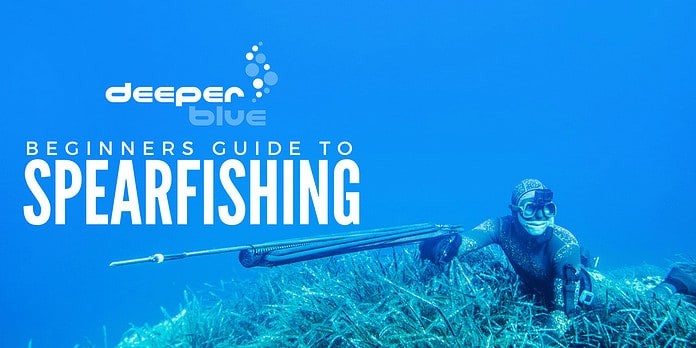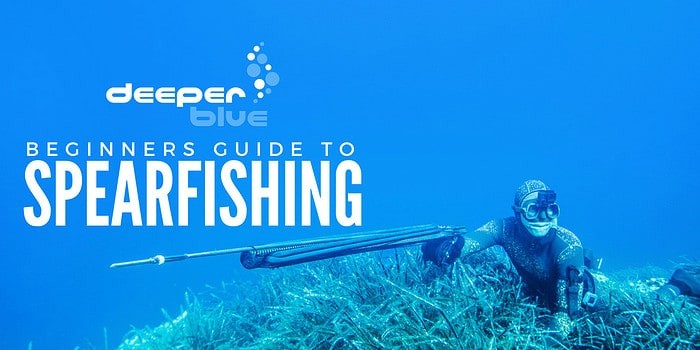Being new in a sport or activity means you make lots of mistakes. That’s all part of learning. To help speed up your journey we take a look at some of the more common mistakes made by rookie spearos and how to rectify them.
Speargun Mistakes
Putting a speargun up against your shoulder and sighting it like a rifle, or holding it in front of your face
Most spearguns can kick back with a strong recoil force that can cause severe injury. Spearguns look like riffles but are shot like pistols, with a straight arm and locked elbow. Many shooters like to wrap their second hand around their primary hand, or sometimes place it on the back of the gun butt. You can also shoot a speargun “from the hip” by keeping it beside you so that it doesn’t hit you with the recoil kick. This is commonly done with a thumb on the trigger for close up shots like shooting a rocked-up fish, and you should pull the gun back clearing the shaft of the track or muzzle to protect the gun from damage.
Not practicing gun handling on land before going diving
I taught two guys to spearfish years ago, that didn’t practice at all with their new spearguns before our ocean dive training day. They did not put on their wetsuit tops and gloves and test pull the bands back 95% of the way to the first loading fin, (as instructed), and it turned out neither of them could load their guns underwater. Never load a speargun out of the water, or test load one without proper spearfishing gloves and a grip chest pad or hip grip. Become an expert at replacing the shaft in the speargun, and always test pull against the mechanism to be sure it is locked. Become familiar with the trigger safety and have it on before loading it in the water. Practice wrapping the line, first from the shaft connection, then wrap it over the line wrap and shaft if it’s an open muzzle, then down around the line release, once for single wrap set-up or twice if a double wrap, then to a muzzle bungee with a clip, or reel or float line with a clip. My two all-star students did this only once in the classroom, so they forgot everything by not practicing and reinforcing the procedures. When handling the gun in the water, keep your hands outside of the line wraps and never in-between them.
Leaving the safety on
One of the most common mistakes, that often keeps new spearos from spearing their first quality fish, is leaving the gun on safety while hunting. Usually, the fish is gone in a flash when they choke the shot. When the hunt is on, the safety should be off. The diver should use muzzle awareness for the safety procedure at this point.
Too much gear clutters the diver and slows him or her down
When first beginning to spearfish keep equipment as simple as possible. Scuba spearos can safely use a speargun with just a short bungee and a fixed line. Having a reel or floatline is not necessary if they keep watch of their gas supply. Freedivers can use this same setup, but should not dive in water deeper than the line length, so that they can get to the surface while still holding the gun. Spearguns with reels or float lines provide a safety advantage, allowing freedivers to release line and reach the surface, so get one or both soon and practice with them separately, before shooting fish.
Not starting out by shooting small bottom fish
Shooting big powerful fish, can hurt you and break gear. You should master your techniques and equipment on smaller and easier, but legal sized fish. Good species to start hunting are benthic or bottom dwellers that won’t bolt away with, or bend your spear. In Florida and the Caribbean hogfish are the perfect fish to begin targeting, as they don’t get too big unless you’re in far away or deep waters, and they certainly are not one of the smarter fish out there, yet one of the favorites to eat.
General Spearfishing Mistakes
Using short and underpowered spearguns, Hawaiian slings or polespears
The saying goes “For big fish, you need a big spear!” Water density slows short and underpowered spears quickly, so they are best used for close-up spearfishing, due to close quarters or poor visibility. Get a longer spear that has the best range you can afford, for the habitat you plan to hunt.
Descending before loading a speargun
The best shot often presents itself during the initial descent. Experienced gun shooters load them while descending, and polespear or Hawaiian sling spearos should get their spears in the ready position to pull back and fire.
Swimming near the bottom
Get as high as the visibility allows, then drop silently in on fish. This relieves pressure on fish, and gravity also helps for a faster shot. A downward angle can often pin a fish to the bottom as well, allowing hunters to grip their prey easily and carry it to the surface or string it.
Chasing fish and swimming with jerky movements
These actions will spook fish. Slowing down, relaxing and blending into the underwater environment will allow you to get a closer for a shot.
Incorrect fish identification
Get a fish guide book or go online and learn the shapes, markings, skin appearance and behavior of the prey.
Shooting undersized fish
Learn the size regulations and check them often. You can even mark sizes on your gun or spear. Don’t shoot marginal fish. Be sure you can be proud of every fish you shoot.
Shooting from too far away
Learn the flight distance of various fish. Hogfish can be easily approached for a good shot. Most snappers and groupers will be wary and require longer shots.
Not target shooting
You need to fire your speargun, Hawaiian sling or polespear often and from various angles and distances to obtain the necessary hand-eye coordination. Shooting needs to become instinctive, and this only happens with constant shooting, especially on moving targets. If you think about a shot, you’ll probably miss it. One technique for practicing is to repeatedly shoot targets, whether they are weighted hard foam fish or just flattened aluminum cans. When you get pretty good, try dropping them and shooting as they sink to the bottom.
Letting a sling or speargun drift away after shooting it
Hawaiian slings, free shaft guns, bluewater guns or riding rig guns can easily float away while diver is busy retrieving and securing their fish. Loop a buoyant sling or gun over your arm after taking the shot. Many scuba divers weight down guns to be negatively buoyant when empty to stop them from floating away.
Pulling on a spear shaft or lifting a speared fish
The spear will often tear free. If possible, swim to the speared fish and keep it pinned down or in hand while finishing it off with a knife. Dragging a trailing wounded fish to the surface often attracts predators, so having a buddy tag team shoot the fish again can be a big help.
Spear removal before stringing the fish
This almost always results in a lost fish. Always string it first. Killing the fish before stringing it can also often be wise.
Bagging fish is difficult to do and takes too much time. It also creates tremendous drag while swimming with the catch, and does not conceal the fish from predators.
Not having a small narrow beam dive light
Spearos with a spot beam light can take quick kill-shots in dark holes, whereas a diver without a light can’t effectively pursue even wounded fish that rock up in dimly lighted areas.
Dive Boat and Spearfishing Etiquette
This is all about keeping to some simple rules so as not to get told your dive day is finished early; how to get invited to come back diving again; and to have buddies ask to dive with you.
- Never be late. Always show up fifteen minutes early.
- Do not board a dive boat without permission.
- Do not spread your gear all over the boat. Find your spot and keep your gear stowed.
- Do not bring a GPS on board. Private dive sites are not public property. Some Captains will confiscate them.
- Do not jump the gun, racing into the water while everyone else is securing the boat, and assisting other divers. Give everybody the same chance at a big fish.
- Never bring a loaded gun into the boat. You might get your gun tossed overboard.
- Do not hog a shot when another diver has already targeted the fish.
- Do not shoot another diver’s holed-up fish before he or she can pursue it unless that was your buddy team plan. Otherwise, hunt your own fish.
- Do not hog the hot spot. Planting yourself at or above the best hole preventing fish from returning or another diver from a possible shot.
- On private boats, do not leave before helping to unload everything or assist cleaning the boat, and filleting the fish. Ask how much is your share of the trip cost and pay up.
Many spearfishing experts recommend finding an instructor or mentor to get a head start on the spearfishing learning process.
Continue reading more from the DeeperBlue.com Beginners Guide to Spearfishing.


